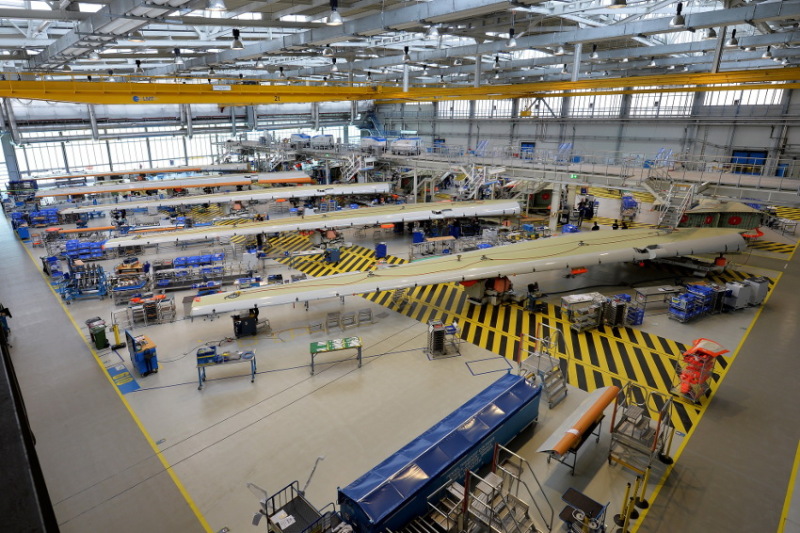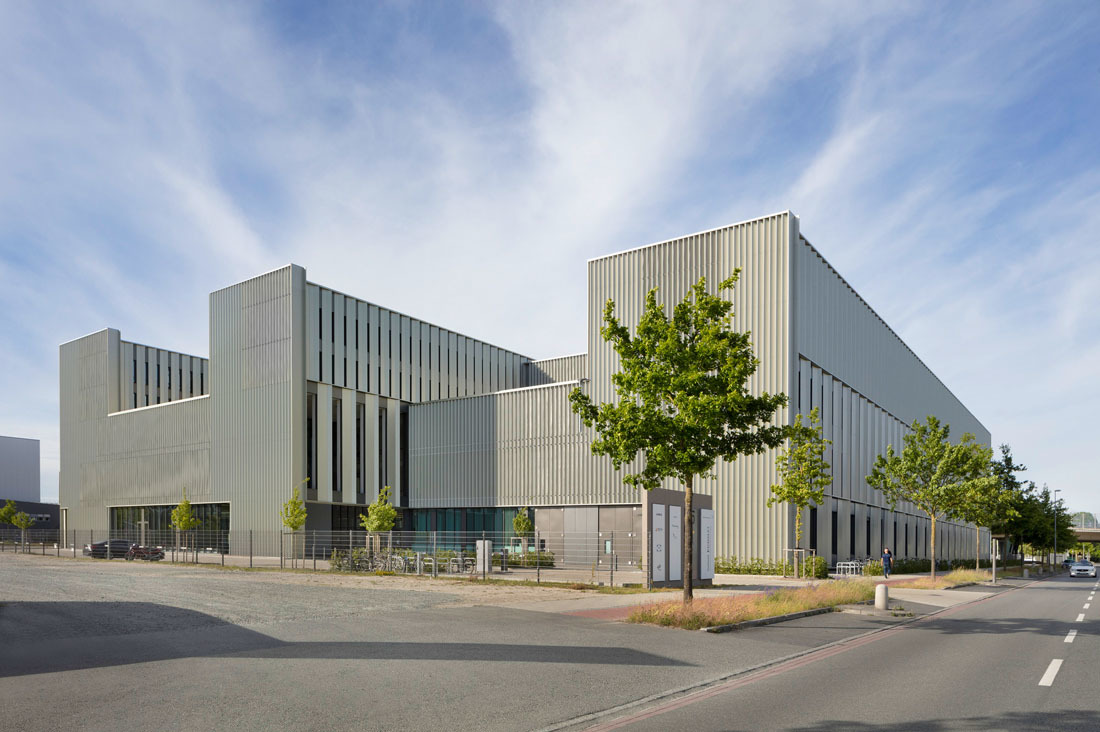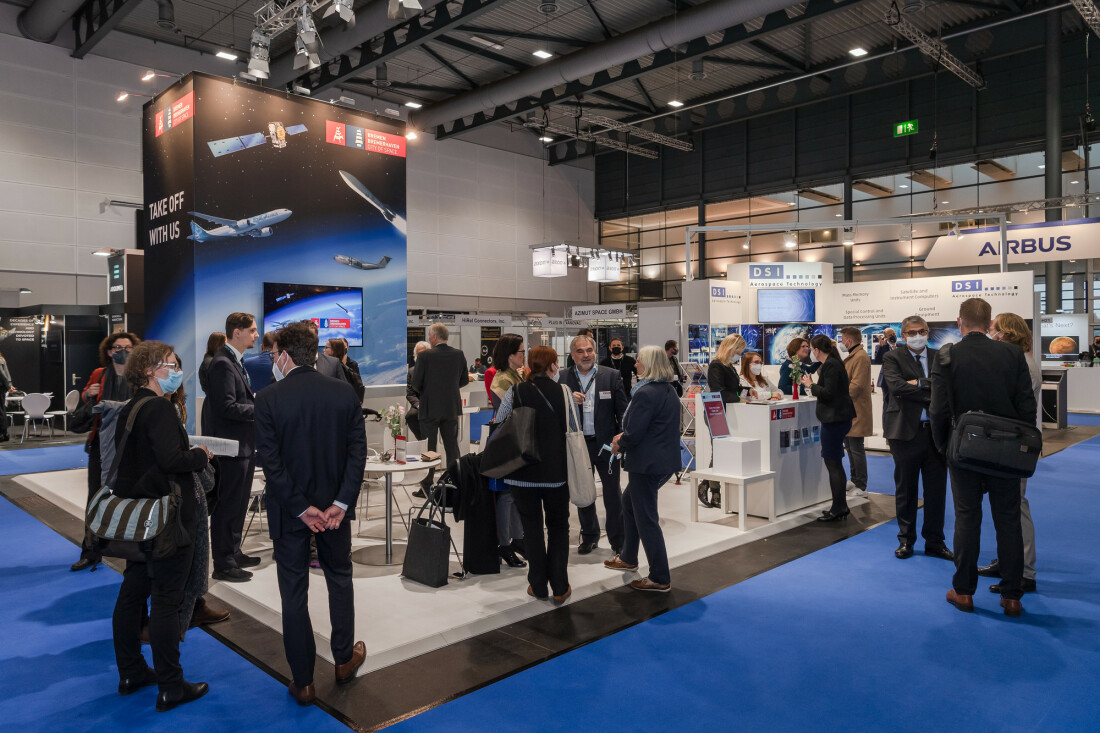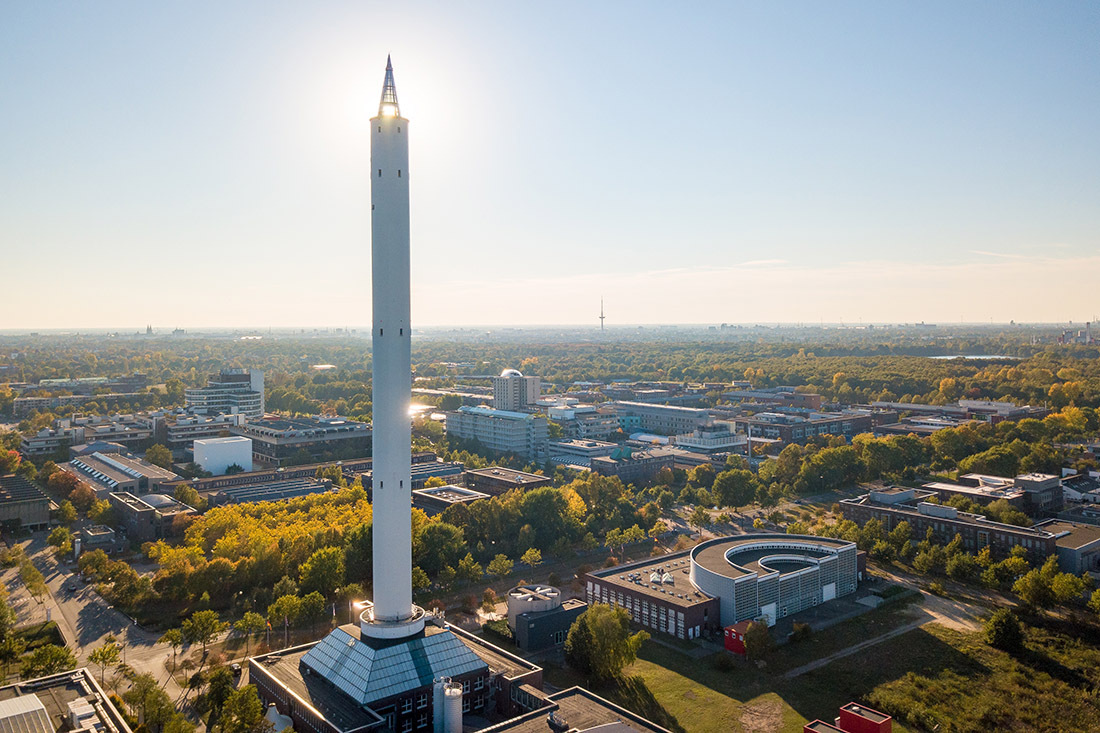Take-off for Bremen: what makes the city a hub for aerospace expertise
AerospaceThe top six factors behind Bremen’s success as an aerospace hub

At home in the skies: flight history in Bremen began over a hundred years ago with the aviation pioneer Henrich Focke. Since then, the city has been setting global standards in aerospace – in both science and industry. Cutting-edge technologies and flagship projects, from communication satellites to Ariane rockets, proudly bear the label “Made in Bremen.”
Bremen’s aerospace industry comprises more than 140 companies and 20 institutes, employs over 12,000 people and generates revenue in excess of €4 billion a year. The city has more space aeronautics and aerospace experts as a percentage of its population than anywhere else in Germany, making Bremen the largest aerospace centre in Germany.
What makes Bremen so successful as a location for the aerospace industry?
1. International reach: from Bremen to the world

Airbus, OHB SE, Materialise and Rheinmetall Defence Electronics are just some of the major industry players that are based in Bremen. Their products are needed all over the world and they have become big with the industry. These big players in turn attract many small companies that set up as suppliers or start up with new ideas in the shadow of the big ones.
Up to 4,500 people are employed in the various Airbus Group divisions at the Bremen Airbus site. The city is also home to the Airbus high-lift centre, the interdisciplinary platform for all Airbus high-lift systems. It all happens here – from flight physics and development to manufacturing and assembly. At the plant near Bremen Airport, engineers manufacture the landing flaps for nearly all Airbus models. The site is also a hub for research into climate-neutral aviation. This includes the ZeroE Development Center, dedicated to future hydrogen-powered aircraft, and a new test facility currently under construction for hydrogen fire safety.
In the field of space exploration, Airbus Bremen serves as the company’s central hub for human spaceflight. It’s also where cutting-edge robotic and tank systems are developed and manufactured.
The Franco-German joint venture ArianeGroup is involved in building the upper stage of the Ariane 6 rocket – every single upper stage comes from Bremen.
OHB SE is one of Europe’s leading space companies. Headquartered in Bremen, the company develops and tests communication satellites, among other technologies. Ten of the 14 Galileo satellites currently in orbit were built by OHB. The company is also planning its own offshore launch platform in the North Sea. Bremen-based suppliers are making a name for themselves as well – such as ZARM Technik AG, a global leader in attitude control systems.
With these greats, Bremen can present itself confidently to the public: as the organiser of international trade fairs such as Space Tech Expo Europe, the Hanseatic city welcomes guests from all over the world every November. And the state itself is also internationally active, at trade fairs such as the ILA or Space Tech Expo USA Bremen shows itself to the world public.
2. A think tank for climate neutral flight – the ECOMAT development centre

The ECOMAT development centre is Bremen’s beacon project in the aerospace sector. ECOMAT, the Centre for Eco-efficient Materials & Technologies, opened its doors in early 2019 at Bremen Airport-City. Eco-friendly aviation, lightweight construction and materials development, 3D printing, and digitalized development processes all go hand in hand here.
The idea is for all partners to use each other’s laboratories and test rigs, to discuss findings with each other and to create new knowledge together – all under one roof. The German Aerospace Centre DLR, Fraunhofer IFAM and the Faserinstitut Bremen e.V. (FIBRE) are some of the partners in the 22,000 square metre building. Industrial players like Airbus and TESTIA GmbH are also on site, and partners from regions such as Saarland and the Netherlands take advantage of the interdisciplinary expertise concentrated here.
3. The earlier the better – combating the skills shortage by investing in talented young prospects

National and international programmes are a feature of the industry’s research and development landscape – and many of them have very long lifespans. Locally, the aerospace industry is also supported by the Aerospace Research Programme LuRaFo. The challenges lie in retaining and building on specific expertise and being among the first to master new technologies. The University of Bremen, the Bremen region’s three universities of applied sciences and the Constructor University not only carry out aeronautics and aerospace research but also provide a steady stream of highly qualified graduates. The international space master's degree programmes "Space Sciences and Technologies" (Space-ST) and "Space Engineering" (SpE), for example, are among the popular offerings. Brand new: “Aerospace Systems Engineering and Management” at Bremen University of Applied Sciences.
Unique in Bremen is the GymProLuR - the Gymnasium Upper School Project for aerospace. This collaboration between the city’s secondary schools, the Bremen University of Applied Sciences and the regional government gives teenagers a chance to try out the industry while they are still at school. Through talks, projects and internships, they gain real-world insights into the aerospace sector. The benefit for Bremen is that young talents can then be identified and nurtured at an early stage.
In addition, four Bremen schools help to organise the German CanSat competition, which forms part of the European Space Agency’s international competition.
Industry and research institutions are involved in education and training.
Bremen offers a wide range of vocational training opportunities and academic programs. As a result, many young professionals choose to stay in northern Germany – thanks to the variety of career paths available across numerous disciplines. In addition to engineering, materials science and business programs at the University of Bremen, the University of Applied Sciences Bremen stands out with its dual study options and specialized bachelor’s and master’s programs in aerospace.
Not to forget: the promotion of up-and-coming start-ups. Bremen hosts international events on the topic of New Space, plus the Business Incubator of the European Space Agency ESA, the ESA BIC Northern Germany, where young ideas thrive.
The offer of local information and support to Bremen's start-up scene operates under the umbrella of the Starthaus Bremen and Bremerhaven. Aerospace start-ups are thus embedded in a functioning start-up ecosystem with many functioning public and private activities.
By targeting and nurturing young talents from an early stage, Bremen is combating the shortage of skilled workers in the industry and helping the aeronautics and aerospace sector to explore new horizons.
4. Well connected: clustering for success

Under the motto "more innovation and competitive strength through cooperation in the aerospace industry", Bremen institutions and the industry network AVIASPACE BREMEN e.V. work closely together within the framework of the Bremen Aerospace Cluster. Suppliers, production companies and research institutions are looked after by the Aerospace Cluster of the State of Bremen. The region's community of interest acts as a local mediator between business, research, politics and administration. The cluster's stakeholders are supported in adapting and expanding competencies not only regionally but also nationally. The cluster also represents Bremen's interests in various working groups.
The influence of Bremen’s aerospace cluster also extends beyond Germany’s borders. It works together with international associations such as the European Aerospace Cluster Partnership, Enterprise Europe Network,German Canadian Concourse, Network of European Regions Using Space Technologies, and Women in Aerospace EUROPE.
5. Infrastructure: Everything close by – with all the expertise in one place

Bremen’s compact size has always been one of its key strengths, and the short distances between its various institutions in industry, education and science make it that much easier for them to work together.
But the short distances in Bremen are more than just metaphorical: with the Airport-Stadt and the Technology Park, two hubs of concentrated aerospace expertise have emerged. Airport-Stadt and the city airport are located right next to each other and just a few minutes by car from Bremen’s city center. More than 21,000 people work here across over 600 companies – from global players like Airbus to innovative start-ups based in the local business incubator. Among other things, the upper stage of the Ariane 6 launch vehicle is completed in Airport-Stadt. The Technology Park Bremen is also one of Germany’s leading high-tech locations. Major industry players like OHB operate here in close proximity to renowned research institutions.
6. Research expertise – from the ocean floor to outer space
In Bremen, cutting-edge research goes hand in hand with a strong industrial base. Institutions such as the German Research Center for Artificial Intelligence (DFKI), the German Aerospace Center (DLR) with several institutes, the Fraunhofer IFAM, and the University of Bremen collaborate closely with more than 15 additional research institutions on aerospace-related topics. Right at the heart of it all: the iconic Drop Tower – a landmark of the Technology Park and unique in Europe – where materials and processes are tested under microgravity conditions.
These institutions are tackling some of the most pressing issues facing the aerospace sector and society at large. For example, the 6G Hub is working on making next-generation telecommunications services accessible worldwide, including via satellite. Large research clusters like BreSpaceTech+ and MarsLabor focus on climate protection and the question of how life might be possible on other planets.
What makes all of this particularly impactful is the continuous transfer of knowledge and talent from research into industry – helping companies stay innovative and globally competitive.
Curious about the companies driving aerospace in Bremen? Find out more about the major players.
Success Stories
Bremen’s Economy in Figures: Statistics 2025
The State of Bremen is a strong economic hub. A look at the latest statistics highlights its economic strength — summarising key data such as cargo volumes, export performance, industry turnover, and more.
Learn moreThe history of space travel in Bremen
Small circle, big impact: With the founding of the “Development Ring North” (ERNO) in July 1961, Bremen began its development into one of the world’s leading spaceflight locations. Even the return of humans to the Moon would hardly be possible without technology from the Hanseatic city.
Learn moreMedium-Sized Companies in Bremen Showcasing the Full Range of the Local Economy
Medium-sized companies form the backbone of Bremen’s economy. They create jobs and produce goods that are in demand worldwide. Here is a selection of ten businesses that illustrate the diversity of Bremen’s economic landscape.
Learn more
